The Third in a Three Part Series on Art
Not Only How to Explain Modern Art
(But How to Have Your Students Create Their Own Abstract Project)
Click here to read Part 1
Click here to read Part 2
Click here for the PDF version of this article
Keywords:
| Paul Gauguin | Mark Rothko |
| Pablo Picasso | Jackson Pollock |
| Synchromy | Peggy Guggenheim |
| Armory Show | Collage |
| Abstract expressionism | Color Field Painting |
| Action Painting |
MODERN ABSTRACT ART Part Three
This article will conclude with a class lesson to help students appreciate and better understand art without narrative. The class will produce a 20th-Century Abstract Art Project, with an optional step into 21st Century Digital Art.
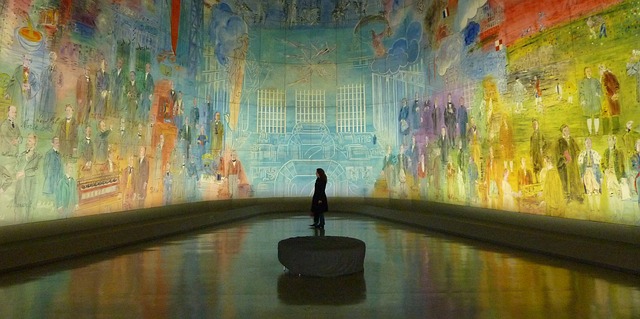
REALISM ABSTRACTION DIVIDE
This article skips a small rock across a large body of well-documented art history, including 650,000 books covering fine art that are currently available, as well as approximately 55,000 on critical insights, and almost 15,000 books examining the methods of individual artists and how they approached their work. You, of course can read a lot of them in your spare time! But today, our goal is to is gain a better understanding of why, at the very beginning of the 20th century, there was a major departure in how some groups of "avant-garde" painters approached their canvas, abandoning realistic art. The rock’s trajectory attempts to show how the camera’s extraordinary technology provoked some phenomenal artists to re-examine how they painted, inventing new methods of applying colors in a far less photographic manner that was far more subjective, departing from:
what we see
to focus on
what way we see
These innovators produced art that in time became incredibly valued. But at that time, the end of the 19th century, buyers for those works were extremely scarce.
THE END OF THE 19TH CENTURY
Enormous changes were commonplace at the end of the 19th century: the industrial revolution, the rise of the middle class, trains and car travel, and a brand-new technology, CHROMATOGRAPHY, was invented.
Color prints could now be cheaply manufactured and sold at an affordable price. Religious pictures, travel pictures, postcards, calendars, illustrations in new magazines and books. Colorful advertisements were being created by traditional artists and were very popular. Poster artists were helping people be aware of the beautiful life of a Coca-Cola drinker. This whole era has been labeled the Chromo-Civilization.
Realistic painters found employment as illustrators and had steady jobs; leading-edge "avant-garde" painters who searched for new ways of looking at the world had a calling and totally relied on intelligent and understanding viewers and buyers. The general public and most critics felt that “edge-of-art” painting was completely beyond any approval and was not art.
In Paul Gauguin’s first solo exhibition in a Paris gallery, not one of his paintings were sold. His exceptional manipulation of color and line that energized the two-dimensional flat surface of the canvas was not acknowledged until after his death. He died never knowing his reinventing a new approach to painting would help lead modernist art’s domination into the first half of the 20th Century.
In February 2015, a Gauguin painting of two Tahitian women was reportedly sold for $300 million dollars, setting a new record, making his painting the most expensive work of art ever purchased.
EARLY 20TH CENTURY
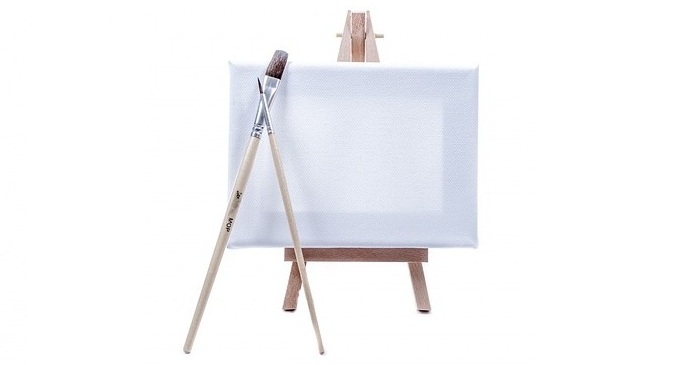 Artists – Cézanne, Matisse, Picasso, Kandinsky, and others – were questioning: What are the basic elements that an artist can use on the two-dimensional surface of the canvas that would be in two-dimensional art?. What would the paintings look like, and more importantly who would paint them? It is rarely a single genius that provides guidance. Master revisions in art come from groups, splinter groups that guide art in unanticipated directions.
Artists – Cézanne, Matisse, Picasso, Kandinsky, and others – were questioning: What are the basic elements that an artist can use on the two-dimensional surface of the canvas that would be in two-dimensional art?. What would the paintings look like, and more importantly who would paint them? It is rarely a single genius that provides guidance. Master revisions in art come from groups, splinter groups that guide art in unanticipated directions.
EARLY 20TH CENTURY- ENTER CUBISM
A GROUP OF TWO
Pablo Picasso and Georges Braque partnered a pioneering style. Working together, they played with space and shape in a way that totally changed the traditional pictorial view. They developed a visual language that compressed space and rejected the conventions of photographic representation.
Cubism challenged paintings done with the camera’s one-eyed view by painting a scene from multiple points of view. It was like taking five different photographs of the same object then dismantling them and reassembling them in an overlapping manner on a flat surface. A portrait could provide a profile and a full frontal view in the same painting. As with most avant-garde art, the general public and the critics dismissed Cubism as "eccentric," its theories "crazy," and Picasso himself "the wildest of wild men." At first, he couldn’t give his paintings away.
THE PATH TO ABSTRACTION
Cubism was a game-changing style that became a major influence in the explosion of new non-objective painting developing at the beginning of the 20th Century. From all over the world, talented and ambitious young painters gathered in Paris. They emphasized originality, doing something personally innovative, trying to find a way to visually share with the viewer a “never been seen” true picture of the world.
THE MANY “ISMS” OF PARIS
Orphism– from France, Futurism– from Italy, Expressionism– from Germany, Constructivism– from Russia, and from the United States- Synchromism, which was among the first completely non-objective movements initiating abstract art.
A GIFTED STUDENT FROM CALIFORNIA
Stanton Macdonald-Wright, a 17 year-old gifted student from Santa Monica, arrived in Paris during the advent of developing experiments and revolutionary patterns impacting historic changes in the art of painting. It would change his life. With his roommate, Morgan Russell, a young sculptor, from New York City, they studied with Matisse, met with Picasso and were quickly caught up in the new, exciting ideas and trends challenging artists with unanswered questions in modernizing art?
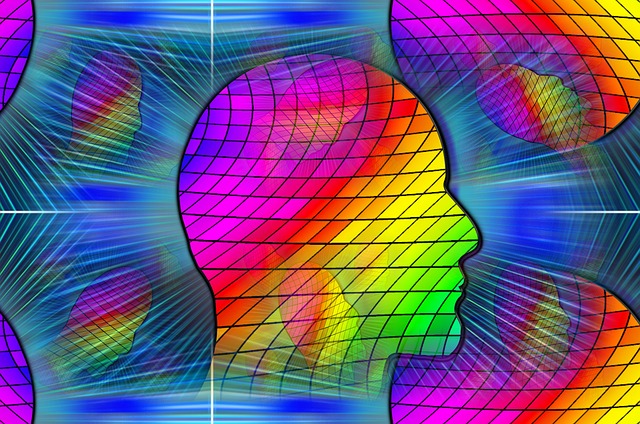 How do painters create never seen before works of art, minimizing all subject matter except pure painted elements? Color contrast, shape and line, borders and volumes, warm and cool values all executed on a two-dimensional flat surface without fictional subject matter. The two Americans invented a technique that recognized an interconnection between musical art and visual art. If music has no subject beyond the combination of notes we hear, could a painting be composed of only the colors we see, music for the eyes? They developed an approach to art based in our visual receptivity to color vibrations in light waves that is a parallel to our hearing receptivity of vibrations in sound waves.
How do painters create never seen before works of art, minimizing all subject matter except pure painted elements? Color contrast, shape and line, borders and volumes, warm and cool values all executed on a two-dimensional flat surface without fictional subject matter. The two Americans invented a technique that recognized an interconnection between musical art and visual art. If music has no subject beyond the combination of notes we hear, could a painting be composed of only the colors we see, music for the eyes? They developed an approach to art based in our visual receptivity to color vibrations in light waves that is a parallel to our hearing receptivity of vibrations in sound waves.
Symphony (with sound) harmonies with compositions of pure sound alone – MUSIC
Synchromy (with color) harmonies of visual compositions of pure color alone – PAINTING
Like many other artists in Paris, they eagerly wrote their manifesto, declaring a new approach to painting – the Synchromous Style – nonobjective art that was more relevant and more lasting than a mere photographic copy of an object, person, or any view of nature. As to be expected, in Paris the young artists were dismissed as "obnoxious Americans."
So in 1913, they went home to New York City to exhibit their work in THE INTERNATIONAL EXHIBITION OF MODERN ART, better known as the Armory Show. When you read some of the 55,000 art books mentioned earlier, most will cover the Armory Show. It became a landmark event. The exhibition displayed 1300 works by 300 artists featuring the most up-to-date European avant-garde painters. It generated massive publicity and public curiosity for a chance to view the visual language of the vanguard European painters, including Henri Matisse, Vincent van Gogh, Cézanne, and Pablo Picasso, along with a number of other major European artists, and, further down the list, Morgan Russell and Stanton McDonald-Wight. Most of the art in the show was dismissed. Russell and McDonald-Wight were also dismissed as too European and accused of being dangerous anarchists.
Journalists described the Armory Show as an invasion of European art that would throw a bomb into the American art world. The show traveled next to mid-America and once again bombed. Faculty members of the Art Institute of Chicago joined with their students, critics, and the general public in responding to modern art. Accusations of quackery and insanity were typical. There was a large public demonstration where Matisse was put on trial and copies of three of his paintings were burned in effigy. Although modernism was deeply personal and idealistic, the American public had a hard time understanding or even tolerating most of it.
However, you could not call the Armory Show a fiasco. There was a definite explosion of artistic expansion. The incredible visual language of the avant-garde forever changed the pictorial landscape for not only American artists, but also critics, galleries and collectors.
Energized individual painters who had attended the show realized that the power to imaginatively guide the future of American art was up to them. The emerging attitude in the art world became "anything goes" and only “the new" was virtuous and acceptable. This new art would need intelligent participation on the part of the viewer; modernist painting required thoughtful viewing. This would not happen overnight; it would take time to develop attentive and understanding patrons.
A MONUMENTAL OVERNIGHT EVENT
 The Armory show was in 1913 and World War I, the war to end all wars, began the following year. With an estimated 10 million military deaths and 20 million wounded, very little was won or lost. A world depression in the 1930s and growing fascism in Europe were responsible for established artists seeking shelter in the United States. Composers, musicians, dancers, writers, and painters gathered in New York City. Many became teachers, helping to set the stage for what would become known as The American Century. The acknowledged epicenter of modern art shifted from Paris to New York. The city was emerging as an important cultural center; the Museum of Modern Art, the Museum of Non-Objective Painting (later changed to the Solomon Guggenheim Museum) and a number of galleries that dealt only in modern art such as , promoted abstract art in America through lectures, publications, and exhibitions.
The Armory show was in 1913 and World War I, the war to end all wars, began the following year. With an estimated 10 million military deaths and 20 million wounded, very little was won or lost. A world depression in the 1930s and growing fascism in Europe were responsible for established artists seeking shelter in the United States. Composers, musicians, dancers, writers, and painters gathered in New York City. Many became teachers, helping to set the stage for what would become known as The American Century. The acknowledged epicenter of modern art shifted from Paris to New York. The city was emerging as an important cultural center; the Museum of Modern Art, the Museum of Non-Objective Painting (later changed to the Solomon Guggenheim Museum) and a number of galleries that dealt only in modern art such as , promoted abstract art in America through lectures, publications, and exhibitions.
POST WORLD WAR II
Prior to Hitler’s invasion of France, Peggy Guggenheim lived in Paris and was good friends with many of the avant-garde painters. After the Nazi invasion, Jews were being arrested and she was in great danger. She remained in Paris supporting the artists by buying many of their works and smuggling the paintings and painters out of the country. Back in New York, her gallery held exhibitions of these major European artists and several, then unknown, Americans such as Mark Rothko and Jackson Pollock.
MODERN PAINTING IN NEW YORK WAS NOW LABELED
AMERICAN ABSTRACT EXPRESSIONISM
Abstract Expressionism primarily fell into two separate groups. Those who used extra-large canvases, fully painted from edge to edge, were called Color Field Painters. (Our class project uses color field technique). Those who felt what goes into the work of art was not a picture, but an event, who seemed to attack the canvas with vigorous sweeping whole-arm brushing gestures, were described as Action Painters.
Dozens of painters explored new ways of reinventing art through intuitive self-expression, attempting to maintain personal freedom, searching for their own “unique-gesture.” What they had in common was experimentation in finding a universal visual language by isolating the most fundamental elements of painting. Abstracting only essential intercommunications in shapes and color – Abstract Expressionism
Many of these artists were discovered in their lifetimes and were extremely successful. Their work may be seen in our National Gallery of Art in Washington DC. The collection is online, and a small sampling would include:
COLOR FIELD PAINTERS: Ellen Frankenthaler, Clifford Still, Josef Albers, and Mark Rothko.
ACTION PAINTERS: Hans Hoffman, Willem de Kooning, Joni Mitchell, and Jackson Pollock.
Jackson Pollock
Peggy Guggenheim believed in Jackson Pollock. She actively promoted him, trying to sell his work at her gallery and providing him with a monthly stipend. She paid his rent on a house with a barn on Long Island; the barn was to be his studio. He would repay her by granting her the exclusive rights to sell his work. The walls in the barn were not high enough for his large paintings, so he unrolled the canvas directly onto the barn floor, nailing it down. He could now paint from all four sides. Using assorted industrial colors, he poured, dripped, splattered, and threw paint directly onto the canvas. When the splashing was finished, he called his wife, Lee Krasner, an accomplished painter herself, to come up from the house to take a look. He valued her opinion, and asked her:
"Is this art?"
When his "never seen before work" was displayed at Peggy’s gallery it did not sell. In fact, she had a hard time giving them away. Years later, she wished she had kept some of the 19 Pollocks she had distributed among her friends.
In 1948 Life Magazine pictured him and his paintings in a large three-page spread with color photographs with the headline:
Jackson Pollock
Is he the greatest living painter in the United States?
He became an instant celebrity and his paintings became very expensive and very sellable.
IN A RADIO INTERVIEW Mr. Pollock was asked:
"In your opinion what is the meaning of modern art?"
(The very question this article discusses)
Jackson Pollock:
"Modern art to me is nothing more than the expression of contemporary aims of the age that we are living in… Today painters do not have to go to a subject matter outside of themselves. Most modern painters work from within… Modern painters cannot express this age in the old forms of the Renaissance or of any other past culture. Each age finds its own technique.”
Mark Rothko
The play RED, written by John Logan, opened on Broadway In 2010 winning the Tony award for Best Play of the Year. The production invites the audience into Mark Rothko’s studio where he is at work on a $35,000 commission to create a series of murals to hang in the exclusive Four Seasons restaurant in midtown-Manhattan. The play deals with the artist’s self-questioning and attempts to answer why the painter declined a prized commission and returned the money.
Rothko always gave very specific directions on how his work should be displayed: never across a large room, always in a small area where the viewer could be intimately up close to the expansive surface of the color, about 18 inches away. The observer will have then eliminated all obstacles and will fill the eye with only the full experience, thoughtfully and intensely. The painter was striving for meaningful, visually concentrated, communication with the viewer.
In a restaurant his murals would be unnoticed, mere background decorations for well-heeled diners conversing over cocktails and expensive steaks, reducing his art to visual elevator muzak. Of course he returned the money, and the large mural canvases are in the ROTHKO CHAPEL, an intimate tranquil environment encouraging viewer’s meditation.
Contemporary Art 1960s
 In the 1860s, enormous changes in the world of art were taking place; the avant-garde artists were challenging the rigid laws of the dominating academic system. The 100 years of changeover is labeled Modern Art.
In the 1860s, enormous changes in the world of art were taking place; the avant-garde artists were challenging the rigid laws of the dominating academic system. The 100 years of changeover is labeled Modern Art.
In the 1960s radical vanguard artists were challenging abstract art’s domination. New outlaw artists, like Andy Warhol were changing the way individual artists expressed a contemporary world view.
Questioning changed from:
Is this art?
to
What is art?
The ending of the 19th century produced of a plurality of artistic “isms”. The ending of the 20th century also produced an abundance of new splinter groups creating unanticipated directions in art, now labeled Contemporary Art. Pop Art, Street Art, Neo-Expressionism, Urban Modernism, Graffiti Art, Conceptual Art, Installations, Environments, Performance Art, Op Art, a resurgence of Collage (which is the style of our class art project)
MoMA “The Forever Now” 2015
CONTEMPORARY PAINTING IN AN ATEMPORAL WORLD
A recent exhibition of nonrepresentational art at the Museum of Modern Art featured a group of influential, contemporary abstract painters. The show makes a compelling argument that Abstract Art is still a major force in today’s art world. Sometimes to create the future, it is necessary to reinvent, borrow, and revise the creative past. Today, abstract painting is extremely popular.
ADDENDUM
The creative future– Digital technology
The end of the 20th century introduced digital imaging and processing, with computer-based techniques making it possible to manipulate photographic images in countless ways.
Instead of light passing through a lens recorded chemically on film, digital photography uses sensors and color filters that convert images into a series of numbers translated by a computer into pictorial values easily printed. The computer can change and manipulate the numbers rearranging pictorial elements with new, unlimited combinations that will be limited in the future only by the imagination of the artist.
STUDENT ABSTRACT ART PROJECT
GEORGE BRAQUE COCREATOR OF CUBISM, INVENTED THE TECHNIQUE OF COLLAGE IN THE EARLY 20TH CENTURY. COLLAGE DERIVES ITS NAME FROM THE FRENCH VERB COLLER, TO GLUE.
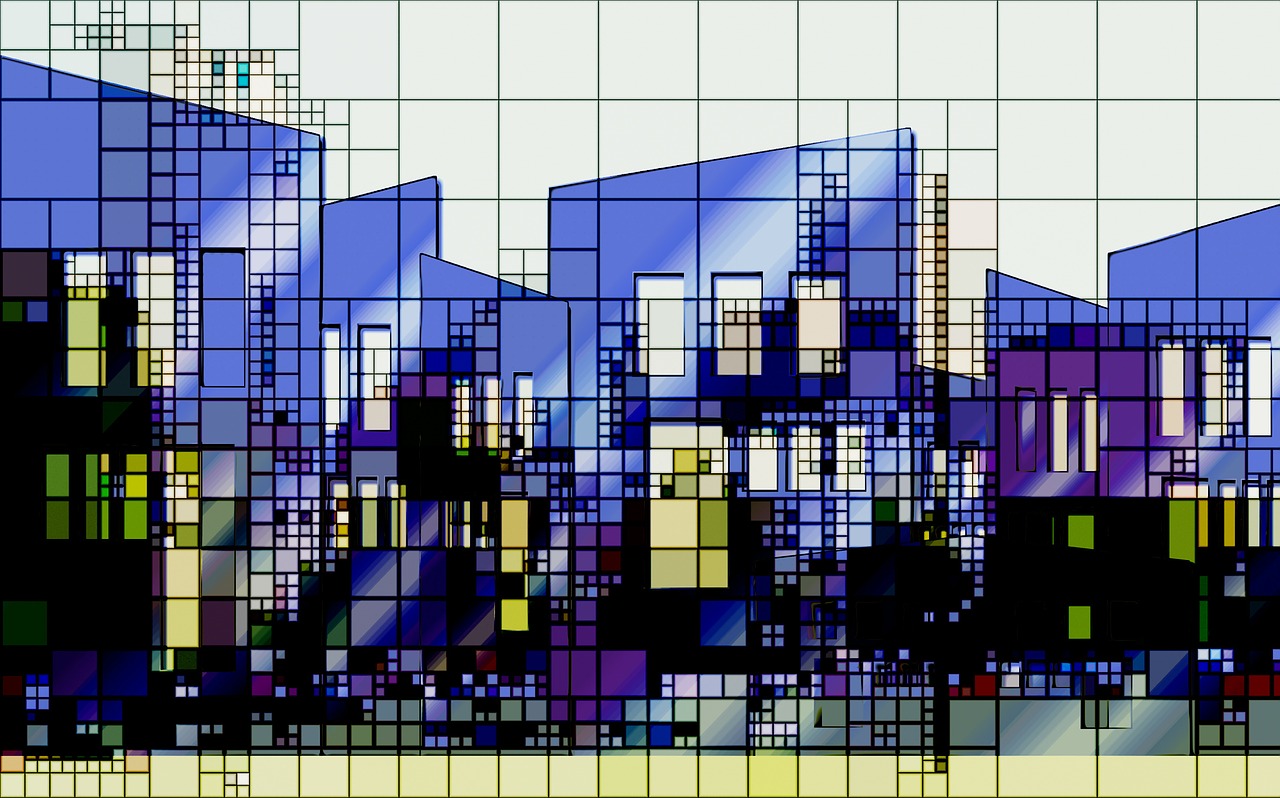
This collage assemblage project enables students to create an art experience using only the basic elements found in non-narrative art. Abstract art threw out all recognized subject matter and relied on the sensations in pure color. Early 20th century photography delivered only unblended, colorless, recognizable subjects. Abstract Art could convey all the basic elements of art — color contrast, line, shape, edges and borders — so that a painter could create colorful art that was totally inventive and visually alive.
This project is not learning all about an art experience.
It will be the experience of creating their own Abstract Art.
PRELIMINARY DIRECTIONS FOR CLASS PROJECT
Materials
12 x 18 white sheets of construction paper that will serve as the surface foundation
12 x 18" assorted multi colored sheets of construction paper
Crayons
Scissors
Clear cellophane tape
Glue stick or Zip Dry paper glue
Assorted marker pens
OVERVIEW
Students will tear or scissor cut an assortment of color shapes from the multicolored sheets of construction paper, employing curved edges torn in free-form organic shapes and cut shapes with straight edges, and angled borders.
Students will choose assorted shapes to arrange a potential collage.
Shapes may be recut or further torn to fit the desired overall look; edges of shapes can be overlapping, touching, or separated. Student artists may punctuate their work with crayons and marker pens using dots, dashes, curving, straight, thick or thin lines of varying lengths. All student work is a guaranteed success; there is no negative judgment —
There is no “bad art.”
The work should proceed out of fun and enjoyment and “what kinda looks good” rather than any adjudication.
There should be no preliminary drawings or pictures of anything representational in the work. Student artists begin with no preconceived image and discover the final look only after they have intuitively completed their color only task.
The focus of each individual’s project is to produce random chance combinations of conjoined organic and hard-edged shapes and lines, resulting in a collage of ambiguous color relationships.
SIX STEPS CONSTRUCTING AN INDIVIDUAL’S COLLAGE
- Selected a flat worksite for your 18 x 12 white construction sheet foundation.
- Use scissors and/or tear sheets from assorted colored papers to produce a pile of nonspecific sizes and shapes.
- Experiment with possible arrangements of random colored shapes fitted onto the foundation; assembled combinations can be touching, overlapping, or separated.
- Crayons and markers may be used to provide a few finishing touches.
- Tape or glue the desired shapes and sizes onto the12 x 18 base foundation and when all the student projects are completed, collected, and randomly shuffled, they will be combined creating the large abstract color field collage.
CONSTRUCTING THE FINISHED ARTWORK
USING 12 X 18 SHEETS OF CONSTRUCTION PAPER
Select three student projects at random, using the 18-inch long sides to form the vertical side of the collage.
The 12-inch top of the pieces creates the horizontal top of the work.
If possible, attach the 30 pieces of artwork onto butcher paper or some backing.
The collage can be constructed by using scotch tape on the back of each student work.
Representational art needs some viewing distance in order to allow the observer to gain the fictional three-dimensional illusion. With Nonrepresentational Art, close-up viewing is preferred.
TEMPORARY ABSTRACT ART ASSEMBLAGE
If you have 30 completed 12 x 18 art projects, in order to exhibit the final assembled project you will need a temporary display area 4.5’ high x 10′ wide, anywhere in the classroom or the school. It can be designed as a brief one-hour or one-day exhibition, or possibly, if space were available, a short-term display.
The art project should be viewed standing about 2 feet back (Mark Rothko style). In this way, the viewers’ direct eyesight and peripheral vision will be entirely focused on the combined harmonies of color vibrations in the finished work.
Because COLOR can generate strong reactions, viewing the art at close quarters makes the experience extremely personal. There may be an urge to reach out and touch the collage. Just do it gently.
Completion of this project will have created an authentic work of Abstract Visual Art.
Jackson Pollock stated:…Abstract painting confronts you. Abstract art should be enjoyed just as music is enjoyed – after a while you may like it or you may not.
DIGITAL SECOND STEP
The student modern art project will jump from the early 20th Century
into the early 21st Century

Digital Art
Technological items that are required for this second step:
✓ Digital camera
✓ iPhone
✓ Computer
✓ Easy editing app (a free download is acceptable.)
✓ Printer
Using the camera or iPhone – take a series of random pictures from various sections of the student project.
✓ Take a variety of shots – close ups, panorama, angled from side to side, up and down – an assorted collection
✓ Enlisting the simplest editing powers, play with possible color adjustments: filters, cropping, enhancing, color balance, whatever is available in the digital program
✓ Print the results (on photographic paper if possible).
✓ Assemble printed combinations together or use singularly in the classroom display.
FOR THE ENTHUSIASTIC STUDENT
It’s easy to use the recording ability in a digital camera or smart phone to produce a short video of this art project. Pan slowly across the oversized paper collage and even add music if desired.
Make a second video recording with the digital printed versions of the collage; add more contemporary music.
THE FUTURE
Photographic film (drawing with light) changed the direction of modern art in the early 20th century. Computer controlled digital photography will lead the direction of the arts in the 21st century.
However, we will still ride horses, we will still paddle canoes, and we will still brush paint on stretched canvas…
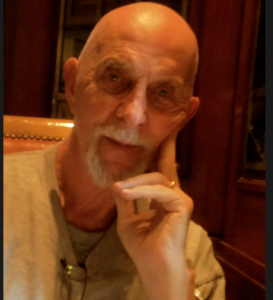 Michael Hoctor received a Bachelor of Arts from UCLA’s College of Applied Arts and a Master’s Degree from the UCLA College of Fine Arts. He was awarded a Ford Foundation Fellowship in Education. Mr. Hoctor taught advanced improvisational skills and acting techniques as well as producing and directing productions of plays and musicals. He taught classes in California’s Gifted and Talented Education Program (GATE). He cofounded the Laguna Beach improvisational theater, Changing Masks, and directed the play Sarah Was Mine at New York City’s off-Broadway Cherry Lane Theater. In 1996, he enrolled in the Laguna Institute of the Arts and has pursued painting since that time.
Michael Hoctor received a Bachelor of Arts from UCLA’s College of Applied Arts and a Master’s Degree from the UCLA College of Fine Arts. He was awarded a Ford Foundation Fellowship in Education. Mr. Hoctor taught advanced improvisational skills and acting techniques as well as producing and directing productions of plays and musicals. He taught classes in California’s Gifted and Talented Education Program (GATE). He cofounded the Laguna Beach improvisational theater, Changing Masks, and directed the play Sarah Was Mine at New York City’s off-Broadway Cherry Lane Theater. In 1996, he enrolled in the Laguna Institute of the Arts and has pursued painting since that time.
Click to return to the GEC Spring 2015 Table of Contents
Resources
Adams, H. (2009). Tom and Jack: The Intertwined Lives of Thomas Hart Benton and Jackson Pollack. Bloomsbury Press
Artble, (n.d.) Paul Cezanne. Retrieved from
http://www.artble.com/artists/paul_cezanne
Cooper, H. (n.d.) Modernism from the National Gallery of Art. National Gallery of Art, Washington DC.
Crow, K. (2015). Gauguin Painting Sells for Record Sum of Almost $300 Million. Wall Street Journal. Retrieved from
http://www.wsj.com/articles/gauguin-painting-sells-for-almost-300-million-1423182712
Henri Matisse. (2015). The Biography.com website. Retrieved from
http://www.biography.com/people/henri-matisse-9402564
Hoptman, L. (n.d.) The Forever NOW: Contemporary Painting ion an Atemproal World. Museum of Modern Art, New York.
Jackson Pollock, (1948). Summertime: Number 9A 1948. Retrieved from
http://www.tate.org.uk/art/artworks/pollock-summertime-number-9a-t03977
Kushner, M. (1990). Morgan Russell. Hudson Hills Press. New York.
Livingstone, M. (2002). Vision and Art: The Biology of Seeing. Abrams, New York.
Maloon, T. Ed. (n.d.) Pathways to /abstraction 1867 – 1917. Art Gallery, NSW.
Murakami, T. (n.d.) Digital technology and a new language of painting: From computer to canvas. Retrieved from:
http://www.modernedition.com/art-articles/new-painting/painting-and-print.html
Museum of Modern Art, (1999) Morgan Russell Collection in The Museum of Modern Art Archives. Museum of Modern Art. New York. Retrieved from
http://www.moma.org/learn/resources/archives/EAD/Russellb.html
National Gallery of Art.
http://www.nga.gov
South, W. (2001). Color, Myth, and Music: Stanton Macdonald-Wright and Synchronism. North Carolina Museum of Art
South, W, Yoshiki-Kovinick, M., Armstrong-Totten (2008). A Seed of Modernism: The Art Students League of Los Angeles, 1906 – 1953. Pasadena Museum of California Art. Heyday Books.
Stiles, K. & Selz, P. (2012). Theories and Documents of Contemporary Art: A Sourcebook of Artists’ Writings. University of California Press, Los Angeles
Films
IMBd – http://www.imdb.com/list/
Big Eyes (2014)
Edward Munch (1974)
Frida (2002)
Georgia O’Keefe (2009)
Gerhard Richter – Documentary (2011)
Mr. Turner (2014)
Pollack (2000)
Van Gogh – Short film (2009)